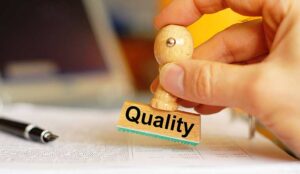The Playvox team shares guidelines for call centre quality assurance calibration.
QA calibration is the process of evaluating and scoring customer interactions to achieve consistency across your contact centre.
There ought to be a second part to the adage “you can’t manage what you don’t measure.” For contact centres striving for consistency, it would be “you can’t measure when you don’t use the same numbers.”
This is why QA calibration exists. Call calibration helps ensure that everyone responsible for QA in your contact centre is aligned on expectations related to agents’ interactions with customers.
In creating that consistency, QA analysts, team leaders, managers and agents understand exactly which metrics matter and how scores are assigned.
In short, calibration in quality assurance creates an environment where clarity, consistency and quality can thrive.
What is Quality Assurance Calibration?
Quality assurance collaboration is as much about the process as it is about the product.
Through call calibration, expectations the contact centre has for interactions between agents and customers across all touchpoints should become clear and enforceable. The process is largely a focused discussion among the QA team and a review of interactions and results.
The product is a strong, consistent QA programme that helps agents do their best work in delivering world-class customer service.
Contact Centres Without QA Calibration
In the same way using different numbers to measure the same thing would throw things into chaos, a QA programme without calibration causes confusion, wastes time, and ends in diminished customer service.
In addition to agents not knowing where they stand, how they can improve, and generally experiencing lower morale, analysts can’t truly know what they’re evaluating and ultimately fall short of providing agents with the coaching, training, and resources they need to improve.
In this scenario, the contact centre becomes an unlevel playing field. This invites opportunities for favoritism, actual or perceived, and for unwanted attrition.
QA calibrations are about standardizing the evaluation of agent performance. As large a task as that seems, it’s important to know that calibration sessions don’t need to be over-engineered or complicated.
One of the most important things to bear in mind is that everyone in attendance – QA analysts, team leaders, agents, and members of the management team — is coming together to agree on how performance metrics should be scored and evaluated.
Each team member, equally represented in a calibration session, brings their unique perspectives, experiences, and skills to the discussion.
It is that richness and diversity of inputs that make the QA calibration process rewarding and effective.
When conducting the calibration session, it is best to use customer interactions from a range of channels, including phone, chat, email, and social media.
And while diversity is also important here, it’s critical that there be uniformity in the quality of service delivered in each interaction.
It should be high across all instances so that the team can maximize accuracy and effectiveness in performance measurements.
Why Your Work as a QA Analyst Needs to be Calibrated
Quality assurance calibration reduces risk — the risk of favoritism and low morale, the risk of poor customer service, the risk inconsistency, and the risk of wasted time. Calibration helps correct and steer contact centre processes through effective measurement.
QA analyst calibrations ensure you and the teams you depend on know what you’re looking to measure and manage, and make the most of your time.
The information you work with during calibrations have long-term value for your contact centre because it ultimately affects the customers your agents serve day to day.
How Often You Should Hold Quality Assurance Calibration Sessions
While calibration sessions should be held in the early stages of forging your QA programme, they should be an ongoing part of the process as well.
Team leaders and managers should be looking at performance data periodically to determine opportunities for improvement and further refinement of measurements.
This involves bringing the calibration team together to review the scoring process for specific metrics and finding a new way to measure those aspects of performance.
Relevant interactions should be available for attendees to evaluate and come up with their own rating. As a part of ongoing calibration sessions, it’s important to encourage agents to participate in the calibration process.
Observing customer interactions while not in the midst of them provides a unique and measured perspective on their own performance, giving them a fresh perspective. They’ll more easily identify opportunities for improvement and help develop more effective scoring this way.
Quality assurance calibration forms the foundation for a well managed contact centre, helping to eliminate bias, favoritism, and inconsistency.
When done well and managed with the proper technologies, agents, quality analysts, managers, and customers will enjoy tangible improvements to services delivered
Author: Playvox
Published On: 5th May 2021 - Last modified: 10th Dec 2025
Read more about - Expert Insights, Playvox, Quality






































